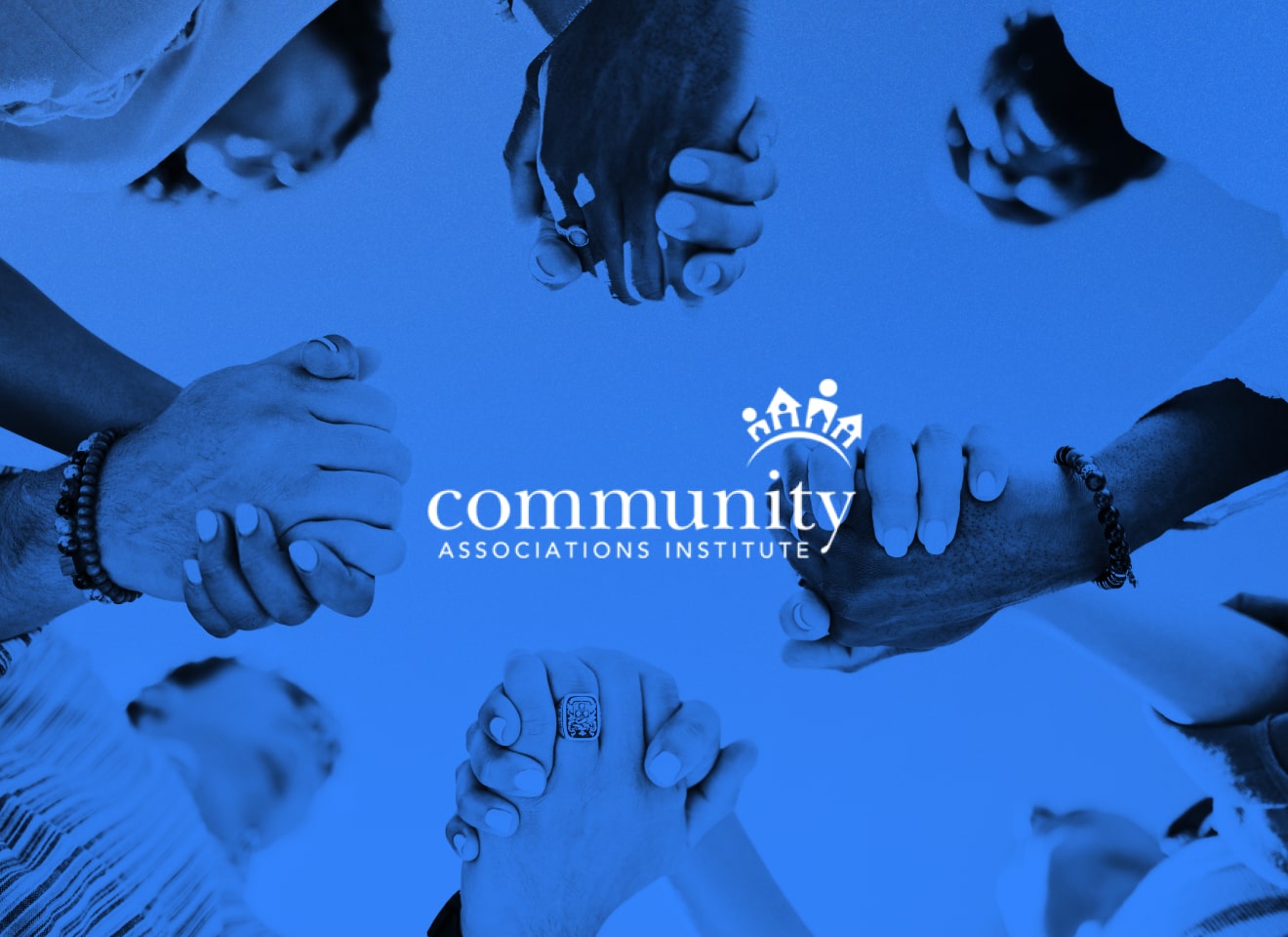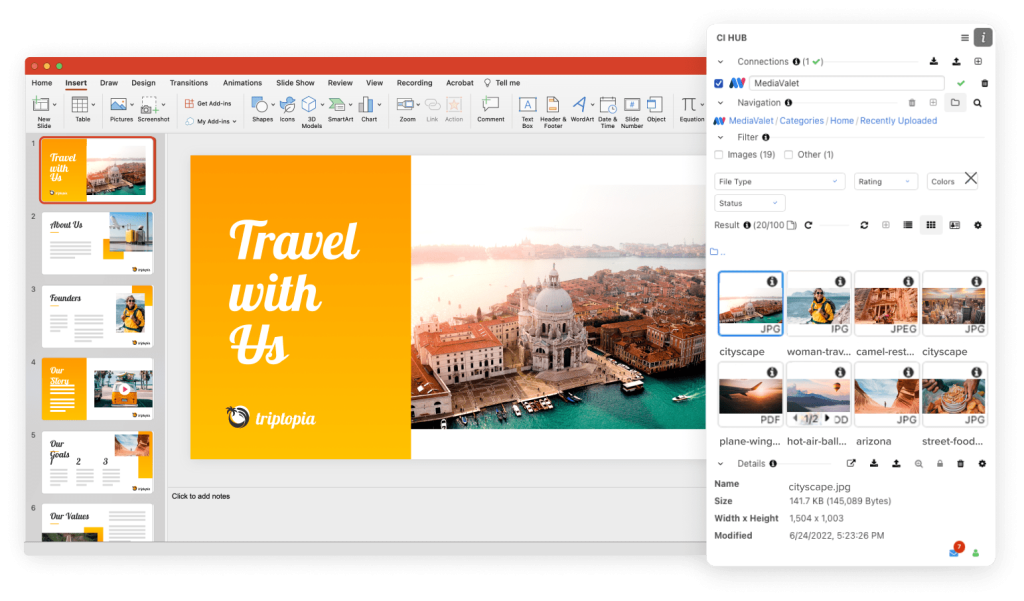Community Associations Institute


Who is Community Associations Institute?
Community Associations Institute (CAI) is a nonprofit organization that provides education and resources to community association professionals and homeowners. They faced challenges in managing their digital assets, which were scattered across various platforms, leading to inefficiencies and difficulties in locating and sharing content.
Location:
Falls Church, VA
Industry:
Non-profit
Company size:
Mid-Market
Joined MediaValet:
–
Features:
Office365 Connector
The Challenges
Before adopting MediaValet, CAI faced several issues with managing and accessing digital assets:
The Results
After implementing MediaValet’s Digital Asset Management (DAM) solution, CAI saw clear improvements:

Cori Canady
Creative Director , Community Associations Institute (CAI)
How does a two-person graphic design team ensure a remote workforce, along with 64 community chapters spread across several countries, have access to the content they need to power stronger communities? This is the question we had for Cori Canady, Creative Director at Community Associations Institute (CAI).
In addition to creating new, engaging brand content, Cori was spending up to 15 hours per week responding to asset requests from other departments. Without the right technology in place to support operations, it was becoming near impossible to respond to the growing needs of her organization and chapters.
This interview shares Cori’s journey in making the decision to invest in a DAM, advocating for its use within the organization and the “aha” moments she’s experienced since implementing MediaValet.
To start us off, can you tell us a bit about Community Associations Institute?
“CAI, which stands for Community Associations Institute is a non-profit organization that was founded almost 50 years ago to address the growing housing model, primarily in the U.S. (but we have members around the world).
We address the common interest, home ownership model where you purchase a home in a community, condominium or co-op, and pay monthly assessments to an association that then provides services to the homeowners. CAI’s members range from volunteers to professional community associations. Our goal is to provide them with education, ongoing certifications and designations, as well as an opportunity for people to network together throughout the year.”


Can you tell us a little bit more about yourself and your background, and what you do at CAI?
“As a graphic designer, I’ve been working in the industry for a long time – 30 years actually. I came out of school when things were mostly print-based.
Through my career, I’ve worked on branding all kinds of marketing, communications, collateral and publications. I’ve seen the industry develop from one that was traditionally focused on print work, to one that’s taking on a surge of cross-channel digital work – in addition to what’s already being done in print.
With CAI I’m actually on my second tenure. I was with CAI for four years right out of school, then I left and went to work for a marketing communications agency. I came back several years later to take advantage of some of the expertise that I gained from being away. Now, I’ve been back for close to 18 years.
I have one other full-time staff person, who produces all our video and animated content. The two of us together kind of fill in the gaps. Then I have freelancers, who I work with from time-to-time on different things I’m managing.”
How did the team operate and communicate before using MediaValet? What were the major pain points?
“For years we’ve had an internal Windows server, where assets were stored in folders. People would just save files wherever they wanted to, so we had a number of duplicates. I was getting constant emails or phone calls: “Could you pull together everything we have on this and put it in this folder for me?” Then I had to drop what I was doing and go assemble all these files, knowing that I was probably making duplicates, or even triplicates – all because they didn’t have a way to easily find everything. I would say I spent anywhere from three to six hours per week on these types of requests, depending on what we had going on as an organization. If we were getting ready for a big event that probably would have jumped up to probably 12-15 hours.
We had the opportunity to work with a leading visual content supplier to generate a library of royalty-free images on behalf of our chapters. As part of that process, they offered us access to a “Lite DAM” that we decided to try out.
While the idea behind it was really compelling, the execution of the library was really cumbersome. It was a challenge for us to keep things organized and we had a hard time training our chapters on it. We figured out quickly that this specific product wasn’t for us, but we needed to find something similar. In 2018, I met the MediaValet team at AdobeMax and immediately knew this was what we needed.”
What made you select MediaValet over alternative options?
“For me, it really came down to knowing that in order to get people to adopt it, it needed to be very seamless and easy. What really enticed me was the Office 365 connector – how easy it would be to use. I felt like some of the biggest requests I was getting were from people putting together PowerPoint presentations. It was such a hassle for me to assemble everything and then sometimes they’d have to come back and say: “This is too big; can you size it down?” I could see the excitement on their faces when they saw how the Office 365 connector works. I didn’t really find that kind of ease of everyday use in the research that I did.”

How did you get internal buy-in to implement MediaValet?
“It was an easy sell – it costs way less, does way more, everybody can access it, and it’s easy to use. Those were all things that really helped me get it sold internally. Once we got people on board, I started the process by setting up a demo with my direct report and we went all the way through it to make sure it was a good fit.
Then, I began building support with little groups of staff – just people that I thought would be helpful to get on board and say, “Look you don’t have to call me and ask where things are anymore. We can just build MediaValet the way we need it”. Every group that I showed it to was onboard, so once we got the ball rolling everybody was already up-to-speed and excited. It’s really resolved a lot of the headaches we were experiencing.”
Can you describe the team that’s using MediaValet today?
“We actually have a really interesting model. We have a headquarters office, but right now we’re all working from home (it’s been amazing to have MediaValet in place with everyone working from different places). Then, we have about 60 people across 64 chapters around the world.
Those individual chapters function as their own local connection for CAI, so they provide some of the same local programming opportunities for people to network with people that live there. We’ve struggled for years with how we can support those chapters. We don’t have the bandwidth at the national level to create marketing collateral for them, but we’ve tried very hard to find ways that we could help equip them with some things that they need.”
How are you using MediaValet today? How does it help you enable your 64 charters?
“We don’t open licensed photography up to the chapters, but we’ve made everything else available. We have some chapters that are very eager to follow the brand, some who want to do what we’re doing, and others who just don’t have a lot of resources. From a brand management perspective, we really needed to get everything where everyone can access it.
There’s a logo system that CAI is the head of, including a specific version of the logo for each individual chapter. As you can imagine, with print files for each chapter, just the logo files alone are a huge section of our storage within MediaValet. In the past we’ve manually provided them with graphics, content and logos that would help them promote national activities or events that the headquarters was spearheading. Now, this is seamless with MediaValet.
We’ve really started to try to find ways in the most recent year or two to give them more content that’s not specific to the national organization, that they can use at any time. For example, we might create something that is more topical in nature, like parking issues around the holidays or when to tell people to take their holiday lights down.
I really wanted them to feel empowered to come up with some new things on their own, as well. That’s hard to quantify and put any kind of number on it, but I feel like in the end it’s going to help us to have a stronger connection across the chapters and enable consistency.“
What kind of assets are you primarily storing?
“We mostly store images and graphics at this point, such as ones we’ve created for social media or banner ads. We also use MediaValet for some print work and PowerPoints that we’ve created for chapters to use.
We have a pretty large number of members who also sponsor things with us, such as certain events or activities, so we have a good collection of all of their logos. It’s made it very easy for us to be sure we’re only using the current logo, regardless of if they’ve gone through a rebranding. If someone sends us a new one, we just update it in MediaValet and we don’t have to worry about it again.”
Is there anything specific that you can do now that you couldn’t before?
“When we create a suite of graphics, some of them go into an email server, some go on social media, some might go on the website – different people are responsible for handling these things. I was really trying to get away from emailing attachments to all of those people. Now, I’ve been working hard to ensure completed graphics are added to MediaValet right away. Then, I just need to notify users that all the assets are there. I sometimes send a link to the gallery, just because that’s an easy way to access it, as well. But I’m really trying to reiterate “go to MediaValet”. Let that be their first source.
Has MediaValet provided any unexpected outcomes?
“We actually had a situation pop up this week. In our organization governance, we have three leadership councils. One of the councils offers an online course for service providers but had concerns about how to promote it. Our staff liaison reached out to several of us to assemble what we have to promote this course. What was so awesome is I didn’t even have to say it – someone else said, “Well, I just created a folder in MediaValet, let’s just put everything there”.
Then, when our staff liaison shared that she didn’t want the chapters to have access to this while we’re still working on it, I explained that we could just hide the category from that user group until we were ready to reveal it. She was so thrilled that we could do that!”
What’s the next step for you?
“There are some people who don’t use it every day, and I want to find ways to get them using MediaValet more frequently and get additional value. I’m also trying to take advantage of the webinars when they’re happening to stay up to date with the new features that are coming. That’s one of the things I like about the platform – I feel like you guys are always looking at ways to improve and bring new things to light.”
Is there any advice that you could give to someone looking to implement a DAM?
“It can be overwhelming. One of the things that I found very, very helpful with MediaValet’s onboarding process is that the steps were broken down. There’s an old expression: How do you eat an elephant? One bite at a time. Keep your eyes on the end goal and work through it, step by step.
I definitely found that once we had the basic framework in place and the system launched, it was very adaptable. We try to use the MediaValet recommended best practices and then adapt as we go.
So, my biggest advice would be just not to get daunted by the process and that it’s worth the investment and time because it will pay off in the end. We’re still seeing the payoff from MediaValet and we’ll continue to see more as we learn new ways to use it.”
The last question is just for fun: What’s your favourite movie and why?
“This is a hard question, believe it or not, so I have two answers for you:
My son is 18 and he’s about to graduate from high school and he is planning to study film in college. So, right now my favorite movie is whichever one I’m watching with him. If this were a normal time I probably wouldn’t see him very much this year – he’d be really busy and doing things out of the house. I’ve enjoyed having the opportunity to just spend some time with him.
The other is the movie I will always stop and watch, even if I’ve seen it a million times – which is The Wedding Singer with Adam Sandler. I love that movie! It’s silly and just a fun one to watch over and over.”
Let’s have a DAM good time
Meet with one of our product experts.